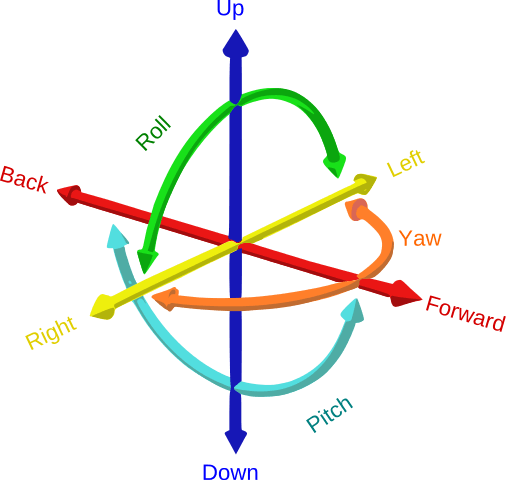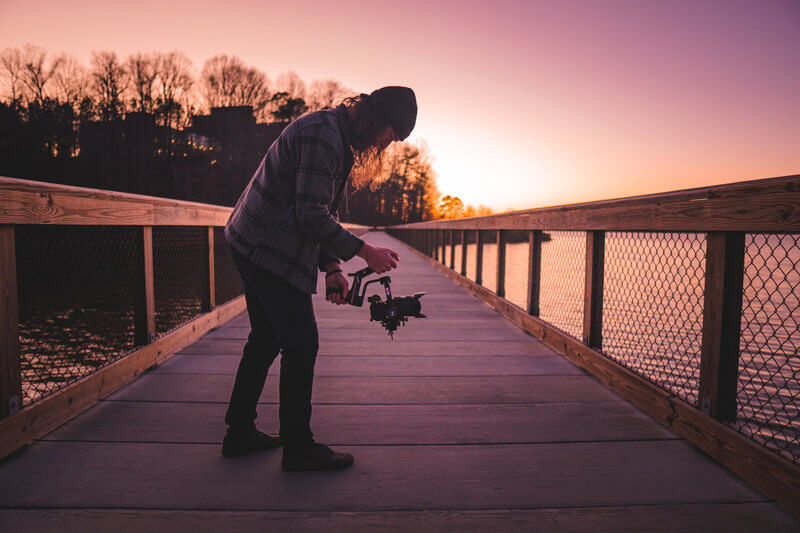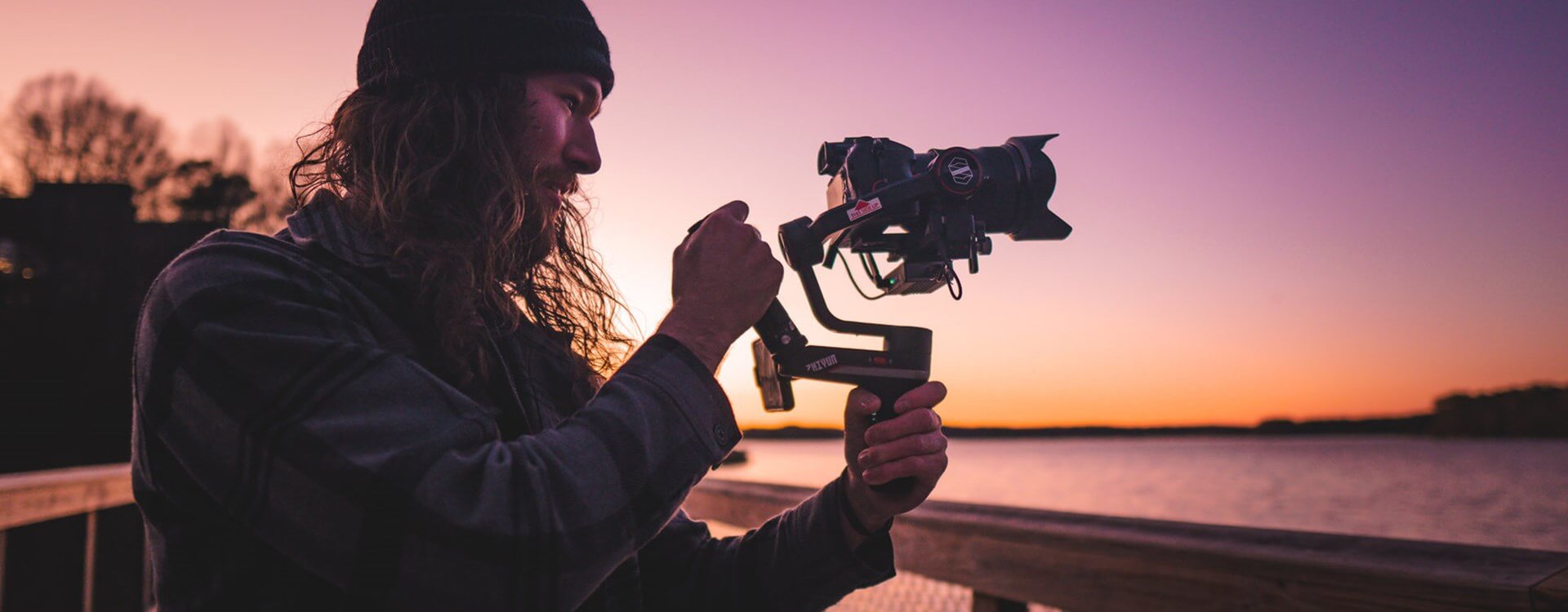Highlights
Table of Contents
Explore article topics
Whether a gimbal is already a part of your content creation or YouTube gear or if you’re just thinking about starting to use it, this post is for you. We’ll start by explaining what a gimbal is exactly and how you can get the best out of one. Here’s all the essential information you need about this useful piece of gear.
What is a gimbal?
A gimbal is a battery-operated device that uses motors and sensors to help correct for unintentional wobbles while you move your camera around one of three axes: pitch, roll, or yaw. If you want to capture smooth and shake-free video footage while hand-holding your camera on the move, a gimbal can help you to achieve that.
Gimbals are available for smartphones, action cams, mirrorless cameras and DSLRs. You can also find them to suit just about any budget, too.
Why use a gimbal?
There are many ways to get a smooth shot, so why choose a gimbal? Today’s YouTubers and content creators often film on the go, so using a Steadicam or a dolly when you’re traveling is not always practical. Gimbals are lightweight and compact and will give you a smooth shot almost everywhere you use them. This makes them ideal for run-and-gun filmmakers who can’t or don’t want to set up all of that extra gear.
Pitch, roll, and yaw – or tilt, roll, and pan
A gimbal can counteract the shakes and shudders in your video when you move your camera around the pitch, roll, or yaw axes. If you get it right, you can make it feel as if your camera is floating through your scene.
The pitch axis is also known as the tilt axis. In other words, it’s the up and down movement of your camera. When you tilt your camera from up to down to follow a falling object or someone descending a flight of stairs, for example, that’s a movement around the tilt axis.

The roll axis is the movement that feels like a boat rocking on the ocean.
Left-to-right movement happens around the yaw or pan axis. It’s used to capture objects that move horizontally through the frame: a panning shot.
While a gimbal can help to correct for unwanted movement around those three axes, it can’t correct for vertical movement. If you climb a flight of stairs, it’s going to struggle to keep everything smooth.
2-axis or 3-axis?
While a three-axis gimbal will be able to stabilize your shots through tilt, roll, and pan movements, two-axis gimbals are available, too. They correct through tilt and roll, but not the pan axes. These are lighter than three-axis gimbals and usually have better battery life, also.
If you think that you might be able to stabilize your camera enough through one plane of movement, then you can probably get away with having just a two-axis gimbal. It’s worth thinking about how you will be moving your camera and what you are trying to achieve before buying a gimbal.
Starting out with a gimbal
Before anything else, you must remember to balance your gimbal. If you don’t, it will still work, but it will have to work much harder and will use up the battery far faster than it should.
Next, it’s essential to think carefully about how you are going to use your gimbal to best effect. It’s great having a new toy and wanting to have fun with it, but you really need to be using it so that it enhances your story. Before you start shooting, plan out which movements you want to be making with your camera, what the movements will contribute to the story, and how your gimbal will assist you in making them smooth.
Which gimbals to buy?

The variety of gimbals is pretty overwhelming, and it almost seems that every other day a new gimbal comes out. Companies like DJI and Zhiyun have plenty of excellent gimbals for any type of camera, whether it’s a smartphone, a mirrorless DSLR or a cinema camera.
For the mirrorless cameras, you have the DJI Ronin S, which is probably the most popular gimbal out there, and the Zhiyun Weebill-S. If you’re using a lightweight camera, you might want to check out the smaller Ronin SC.
The Zhiyun Smooth 4 and the DJI Osmo Mobile 3 are two excellent options for a smartphone and they will help you get awesome footage from your phone camera.
Power your business's creativity with Artlist Business
Gimbal shot ideas
You can use your camera hand-held with a gimbal to film a smooth, Steadicam-style tracking shot. Center your subject in your frame and you can follow it with a fluid motion as it moves through the scene. To make the most out of shooting hand-held, try getting down low or in close to your subject when filming them.
As well as following your subject as it moves through a scene, you can also circle around it using a camera stabilized with a gimbal.
You can use your camera on a gimbal to recreate a crane shot, too. To do this, crouch down and get your subject in focus. Then slowly and steadily stand up. There you go, one easily created crane upshot.
No dolly? No problem! If you want to move your camera horizontally through your shot you can do that smoothly with a gimbal. You don’t necessarily need a dolly for it.
Similarly, if you want a pan shot but don’t have the time or resources to set up a tripod to capture it, you can do it with a gimbal.
You can capture shake-free shots, ones for which you would usually use a tripod, using a gimbal, too. You’ll need to stand there as still as you can to film your scene. It won’t be perfect, but it will do the job.
Other things to remember
We’ve already mentioned balancing your gimbal properly and making sure that you are using it with purpose, but there are a few more things that you need to remember when using a gimbal.
First, while a gimbal is a really useful piece of kit, it can’t replace everything! Sliders, jibs, and dollies all serve purposes, so be sure to use them if they are the best tool for the job.
Shots filmed using a gimbal benefit from having something clear in the foreground. This will help to emphasize the camera’s movement through the scene. If you’re not going to do that, why are you bothering to use a gimbal?
If you’re shooting hand-held, you might as well take advantage of this by getting your camera really close to your subject, or shooting from unusual angles. This is where a gimbal can really let your creativity flourish.
The normal position to hold a gimbal is between your chest and hips. But, even when they are light, you will find that they start to feel heavy quickly. Be prepared for this and make sure you’re well-rested and that your shots are well-planned so that you don’t waste your time. And don’t forget to try inverting your gimbal. It’ll give your body a break and it’ll bring something new to your shot, too.
Finally, there is only so much that a gimbal can accomplish. It’s an incredibly useful tool, but it can’t compensate for everything. If you know its limitations, then you can make the very most of it and what it offers.
Daniela is a writer and editor based in the UK. Since 2010 she has focused on the photography sector. In this time, she has written three books and contributed to many more, served as the editor for two websites, written thousands of articles for numerous publications, both in print and online and runs the Photocritic Photography School.
Share this article
Did you find this article useful?
Related Posts
- By Josh Edwards
- 10 MIN READ
- By Jessica Peterson
- 7 MIN READ
Latest Posts
- 25 Apr
- By Josh Edwards
- 4 MIN READ
